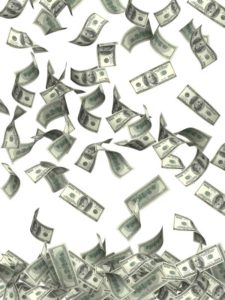
A few weeks ago we talked about making sure your business is protected when the market dries up, as it always does on a cyclical basis. (See “Make Hay While the Sun Shines“.)
One of our heroes sent a note in response:
“Good morning, Michael.
Thank you for the great newsletter this week. To quickly recap my story…I attended my first class with you in 2015…had over $1 million in sales at that time and ended up over $100K in debt!! After learning from you and putting into practice much of your teaching and principles – we now have a profitable remodeling company that we are proud of.
Discover more for your business with our
Markup & Profit Class
Michael talks about pricing jobs, working with employees & subs, contracts, profitability in 1-hour streaming videos.
Order it Here
This year it looks like we will be very close to the 8% net profit and have good cash flow. I have been thinking about what I can do to get my bottom line down so that I don’t pay as much in taxes (like buying equipment, tools, repairs to our building, etc.). After reading your newsletter, maybe the best thing is to put extra into our O.C.R.A., which I have already set up and been faithfully contributing to since I first read your book.
What is the best way to look at ‘extra money’ in light of future downturns in the economy?”
Is that good news or what? I love reading notes like this. I wish this problem on every one of you.
As we said in that article, your Operating Capital Reserve Account (OCRA) should be started and fed on a regular basis. We talk about it in Chapter 5 of Markup and Profit Revisited.
But it’s true that you will have to pay taxes on funds in an OCRA. You’ll only pay the taxes once; if you set aside $5,000 in your OCRA this year and you pay an effective 20% federal income tax, you’ll pay $1,000 in taxes on those funds. The $4,000 left in your account is yours and won’t be taxed again.
Often, if you ask a CPA what you should do if you have extra money, their advice will be to purchase tools or equipment to increase your expenses and reduce your tax liability. That makes sense, to a point. But what happens when the economy turns south? You won’t be able to use those tools or equipment to keep your business in the black.
It’s great to avoid taxes but don’t spend money on things you don’t need just to reduce your tax liability. A little commonsense goes a long way. If your tax rate is 20%, you’re wasting 80% of what you’re spending. You can spend $1,000 on things that aren’t necessary, or put $800 in the bank for a rainy day.
The first priority is to make sure your OCRA is fully funded. To determine how much you need in your account, calculate your average monthly overhead expenses. If you’re a specialty contractor, your OCRA account should have at least five months of overhead set aside. If you’re a remodeling contractor, you should have seven months of overhead set aside. If you are building new homes, bank at least nine months of overhead, or enough overhead to cover the average length of time it takes you to build a new home.
Take the funds right off the top of every payment that comes in the door. Not some payments, every payment. Start at one percent, then move on up to two to three percent, and top out at four percent. Starting slow keeps you from hurting your cash flow. When your account balance reaches your goal, then cut back to half or a quarter of a percent to keep the account active.
When your account reaches your goal, you aren’t in the position of having to take a job from someone you aren’t comfortable working with, or someone who is trying to screw you around before you even write the contract. You also won’t have to take a job at a loss. Now you can start thinking about reducing your taxes.
You might consider an SEP retirement plan for you and your employees, if your business structure will allow it. It’s an easy way to set aside retirement funds for both yourself and your employees, without having to make a long term commitment to fund it every year. Every dollar placed in the fund directly reduces your profit. It’s great for construction-type businesses that have good years and not-so-good years.
Of course, the best way to avoid paying taxes is to not make a profit at all, but that’s a rough way to live. Be grateful when you have to pay taxes, because it means you’re making money.
The knowledge and experience Michael Stone gained in his 60+ years in construction has helped thousands of contractors improve their businesses and their lives. He is the author of the books Markup & Profit Revisited, Profitable Sales, and Estimating Construction Profitably, and is available for one-on-one consultations.

